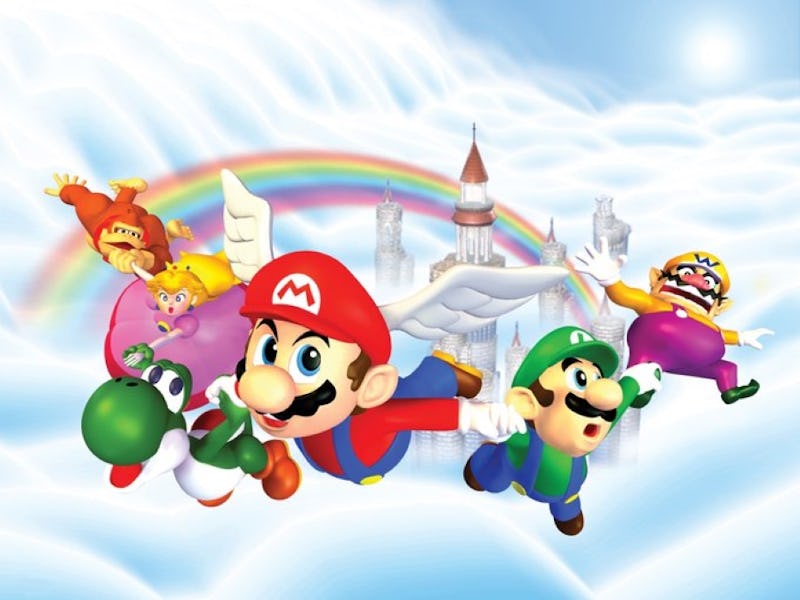25 Years Ago, Nintendo's Beloved Plumber Had A Rocky Start in One of The Most Iconic Games
‘Mario Party’ launched to mixed reviews and a potential class action lawsuit.

We always assume a longstanding franchise was a success from the start. How could they not be? After all, if a TV show or movie or video game is good enough to go beyond the trilogy into a fifth or sixth installment then clearly it must’ve been white hot from the jump. Sure, later entries always pale in comparison but the first entry must’ve had a lot of momentum to merit so many sequels, right? Wrong. The truth is a franchise isn’t always born on day one and even the most iconic names can have troubled starts. Twenty-five years ago, Nintendo learned this lesson when it launched Mario Party for N64.
What? Mario Party wasn’t a success? Yes, the game went on to sell around 2.5 million copies, putting it at #15 on the all-time N64 bestseller list. But sales and reception are very different things. And not every release comes with a lawsuit that could cause $80 million in damages, either.
The Nintendo 64 was a multiplayer machine, offering four-player co-op instead of the conventional two-player setup. The demand to showcase this feature spawned classic titles like GoldenEye 64 and Super Smash Bros., but Shigeru Miyamoto wanted something that worked for younger audiences. Thus, the premise of Mario Party is quite simple: a digital board game centered around Nintendo’s beloved icon. Players roll dice and move around the board, collecting coins in order to purchase stars from Toad, whoever gets the most stars wins. They go head-to-head in a variety of minigames to earn the coins, but as any seasoned player knows there is plenty of random chance and treachery on the board to undermine the meritocracy of its premise.
To say Mario Party unleashed an unprecedented wave of competitiveness in players is not an understatement. Anyone who has spent time playing games in the franchise likely has firsthand experience with its friendship-wrecking potential. Imagine life in the late ‘90s where there was no online multiplayer and every match was against a living, breathing rival (unless you played the bots, of course). The intensity of these matchups manifested in the now infamous N64 stigmata.
No pain, no game.
These palm blisters were the end result of a mini-game mechanic that required players to rotate the joystick as fast as they could. Obviously, the intent was to use your thumb to do this but Nintendo didn’t anticipate that players would be so driven to beat each other they’d hurt their own palms.
Nintendo also didn’t anticipate that New York’s Attorney General would file a complaint after being inundated by calls from parents whose children had injured themselves playing Mario Party. One parent claimed their child had to get a tetanus shot, another said their kid got second-degree burns after playing for only 20 minutes.
The settlement required Nintendo to offer protective gloves to everyone who had purchased Mario Party. It could’ve potentially cost Nintendo upwards of $80 million, but the actual cost was only in the tens of thousands. This was likely due to onerous proof of purchase requirements as well as the fact that the gloves were hideous, fingerless athletic gloves lacking any of the flair or branding you might’ve expected.
Nintendo was smart enough to know that if it was giving out free gloves to make sure there were as ugly and undesirable as possible.
The critical reception to Mario Party wasn’t what Nintendo had hoped for, either. The metacritic score for Mario Party is 78. The metacritic score for 2018’s Mario Tennis Aces is 75. Does anyone think Nintendo is going to release 10 more games in that series over the next 17 years? The reaction to Mario Party wasn’t just “this game is slightly above average.” Some outlets were outright hostile. Game Informer famously gave Mario Party a 3.5 out of 10, and the sequel Mario Party 2 earned a 5 of 10 and said “anyone who purchases this game is mentally deficient.” Ouch.
Nintendo took it all in stride. Then-president of Nintendo Minoru Arakawa even signed a certificate sent to the Game Informer offices thanking them for their “well-written and glowing reviews.” Despite the critics, it was clear from the self-inflicted wounds that players were really dedicated to the franchise. And why shouldn’t they be? Mario Party may not be perfect but it's hard to find a better co-op game, especially in the late 90s/early 00s.
The random chance encounters that reviewers found so frustrating, particularly the star stealing mechanics and bonus star rewards that could wreak havoc on the leaderboard, were exactly what made it endearing for fans of all skill levels. Unlike the combat and shooter focused co-ops of the era, Mario Party didn’t automatically grant a victory to the players who practiced the most. It was an anti-hardcore game, one where your kid sister could pick up a controller and have a real-world chance of embarrassing you in front of your friends.
Nintendo clearly saw the potential for Mario Party even if others didn’t. The franchise has gone on to sell more than 75 million copies across multiple platforms. The appetite for Mario Party is as strong as ever, too, with 2018’s Switch reboot Super Mario Party the bestselling entry in the whole series. Party on, Mario. Party on.